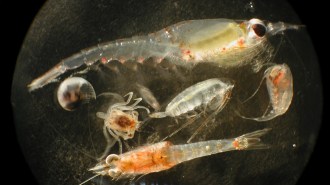- More than 2 years ago
A new study suggests how prions—the infectious agents that cause such disorders as chronic wasting disease—behave in soil and landfills.
Previous work showed that prions can persist in soil for 3 years or more, notes Joel A. Pedersen at the University of Wisconsin–Madison. He and his colleagues are interested in the environmental transmission of prions to animals and the risks of disposing of infected carcasses in landfills.
To study the adsorption of prions to quartz, a common component of soils, the team combined quartz particles with a solution of prions derived from infected hamsters. The scientists then varied the mixture’s acidity and salinity.
“Those are important parameters in an environment, and especially in a landfill,” says Pedersen. As a landfill ages, there’s a decrease in both the salt concentration and the acidity of the liquid, or leachate, that trickles through it.
The researchers found that adsorption of prions to the quartz decreased as the acidity or the salinity of the solution decreased. They describe their results in the April 1 Environmental Science & Technology.
The results indicate that as landfills age, prions could move with the leachate and collect at the bottom. This liquid typically goes into sewage treatment plants.
The team is now examining how prions stick to particles as water flows through a soil column. This more closely approximates conditions in soil and landfills.







